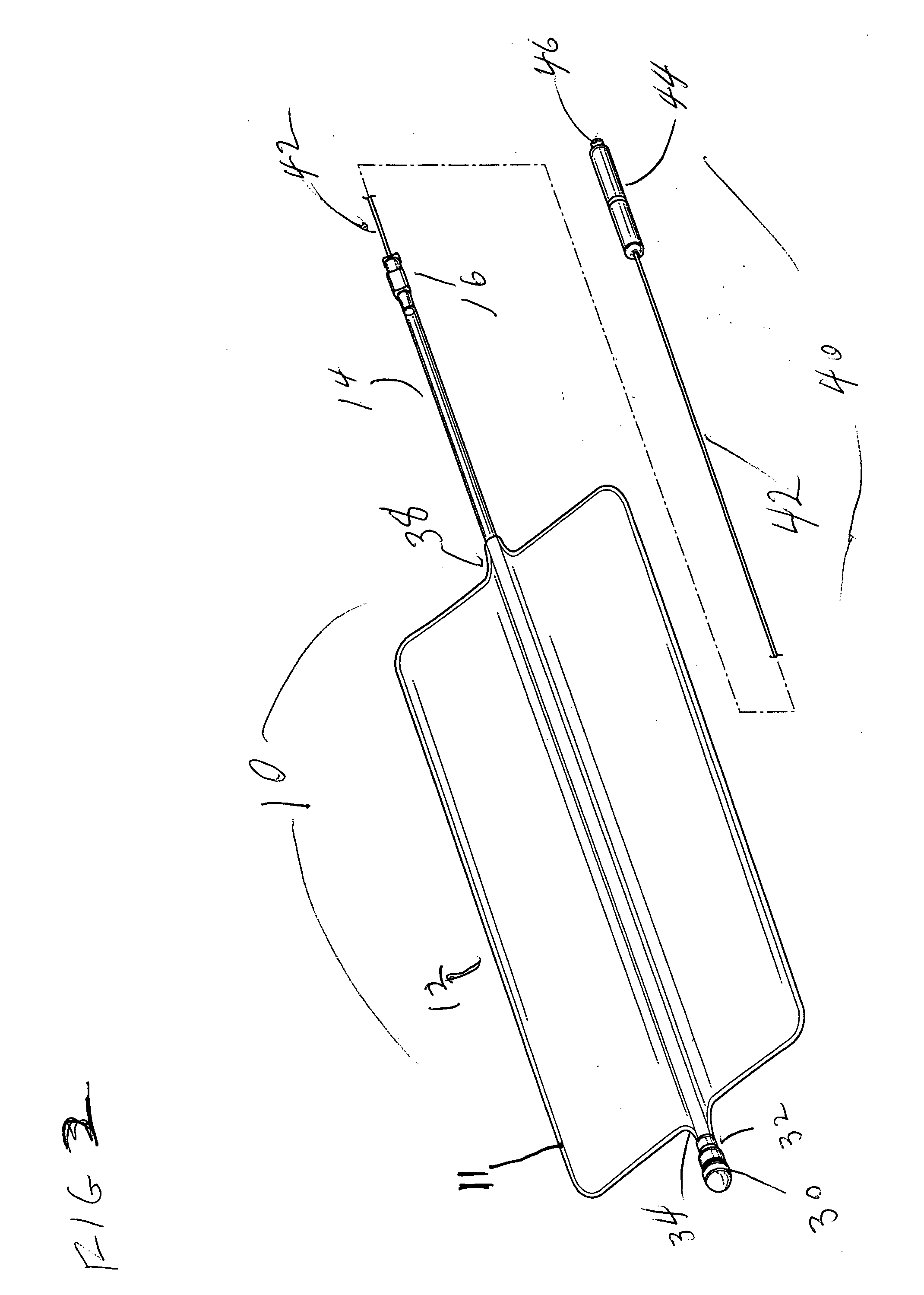Penetrating wounds are where penetrating injuries have an entry wound through the
skin surface, but do not produce an exit
skin wound since the
depth of penetration of the
missile or sharp object is not sufficient to pass completely through the portion of the body that is injured.
Both types of penetrating trauma wounds can cause substantial and often fatal bleeding.
However, this externally applied pressure must be greater than the
blood pressure if arterial bleeding is the cause of the major hemorrhage, and it must be maintained for a prolonged period of time, often until the victim reaches definitive care, otherwise the bleeding will start again when the
external pressure is removed.
If the wound is on an extremity, the compressing cloth or
bandage can be tied snugly, but unfortunately, this snug tying often becomes like a loose
tourniquet and can actually increase bleeding from veins if sufficient direct pressure is not applied directly to the bleeding wound.
Unfortunately, for these clot promoters to be effective, the wound must be such that the promoters can come into direct contact with the bleeding vessels in order to be effective and hence such enhanced direct compression bandages containing clot promoters, or the direct pressure on a wound into which a clot
promoter has been poured, are not more effective than their un-enhanced counterpart stopping bleeding from wounds in which the bleeding vessels are deep within the wound and thus not reachable by traditional methods to achieve the required direct contact by the clot promoters.
If not applied tightly enough however, such a
tourniquet can actually increase bleeding since it compresses the veins preventing any return of blood to the body from the limb, but insufficiently compresses the
artery and hence additional blood enters the limb and is lost from the wound or extravasated into the wounded tissue itself.
However, since all blood vessels are occluded by the tourniquet when properly applied, the limb tissue distal to the tourniquet (often such tissue is healthy and uninjured) is also rendered totally ischemic since all the distal tissue is without
blood supply.
Consequently, if the tourniquet is not removed within 3-6 hours, the entire limb will be dead and require
amputation.
Additionally, since the ischemic part of the limb distal to the tourniquet is slowly dying and releasing
myoglobin from the ischemic
muscle tissue, if the tourniquet is released after a period of 3-6 hrs, the patient may eventually die due to renal failure caused by the
systemic circulation of the
myoglobin which is toxic to the kidneys and which is released by the ischemic
muscle into the
blood stream after the tourniquet is released.
Tourniquets may be lifesaving, but they can result in loss of limb and possibly life if used inappropriately.
Their attempts to tamponade penetrating stab wounds (SWs) and gunshot wounds (GSWs) with the Foley
urinary catheter, with its very small balloon size of 15-20 ml, its suboptimal round balloon shape, and its difficulty of placement into the wound track, demonstrated somewhat disappointing overall results in that only 5 of 8 cases were successfully tamponadded.
However, the bleeding was successfully tamponadded in several cases and resulted in buying time for definitive treatment with ultimate survival and in some may have proven truly lifesaving.
That is, it has no introducer or mechanism to assist its insertion into the liver wound, relying on its own stiffness and user creativity to introduce it sufficiently deep to tamponade the bleeding.
Also, since the balloon on the Liver
Tamponade Balloon is elastic and requires
internal pressure to inflate it, there is no method of knowing what actual pressure is being applied to the tissue by the balloon since the inflation of the balloon requires pressure.
Thus, if someone inadvertently injected more than 60 ml of
saline, the pressure in the wound track applied directly to the liver would increase and potentially split or fracture the delicate
liver tissue resulting in greater injury.
The same undesirable outcome might occur if the 60 ml of
saline were injected into the balloon and the wound track in which the balloon was positioned was of insufficient size to accommodate even as little as the 60 ml without
liver damage.
The difficulty with this elastic balloon tamponade catheter design, and all such designs, is that since it takes
positive pressure to distend the balloon even when it is unconstrained by tissue in a wound track, it is impossible to know how much of the distending pressure generated by the injection of the 60 ml of
saline is contributing to distention of the balloon and how much is actually being applied to the wound track within the balloon.
Too little wound track pressure may result in inadequate tamponade and too much wound track pressure may result in making the injury worse since it may split delicate or friable tissue.
It is not designed for
emergency treatment of penetrating traumatic wounds and its size and shape would make it unsuitable in general for treating traumatic penetrating trauma wounds.
 Login to View More
Login to View More  Login to View More
Login to View More 


